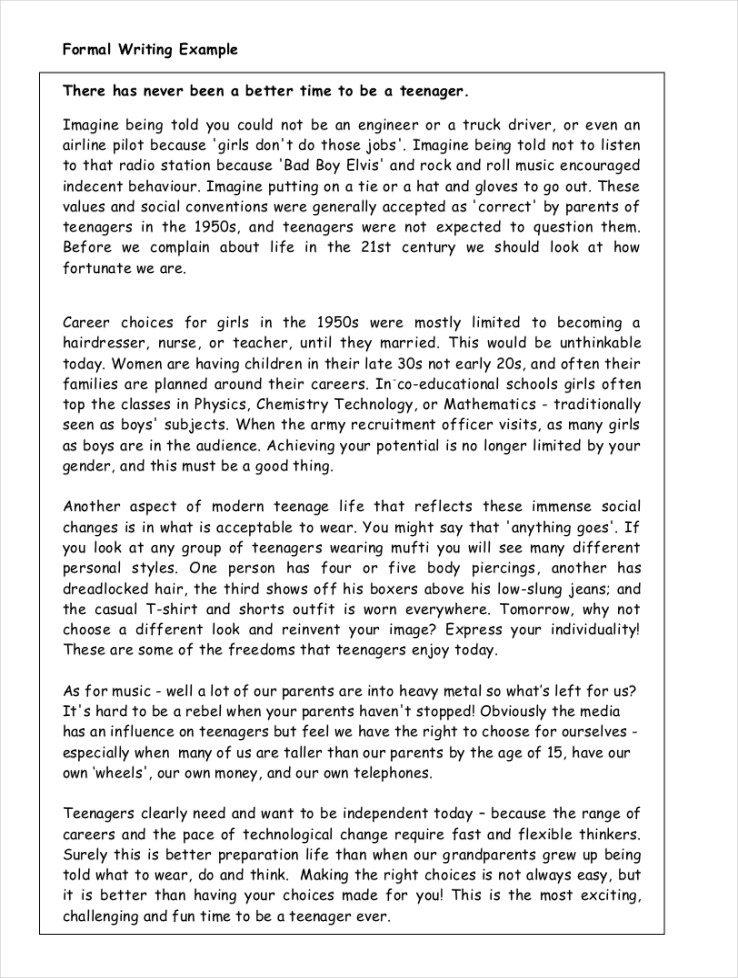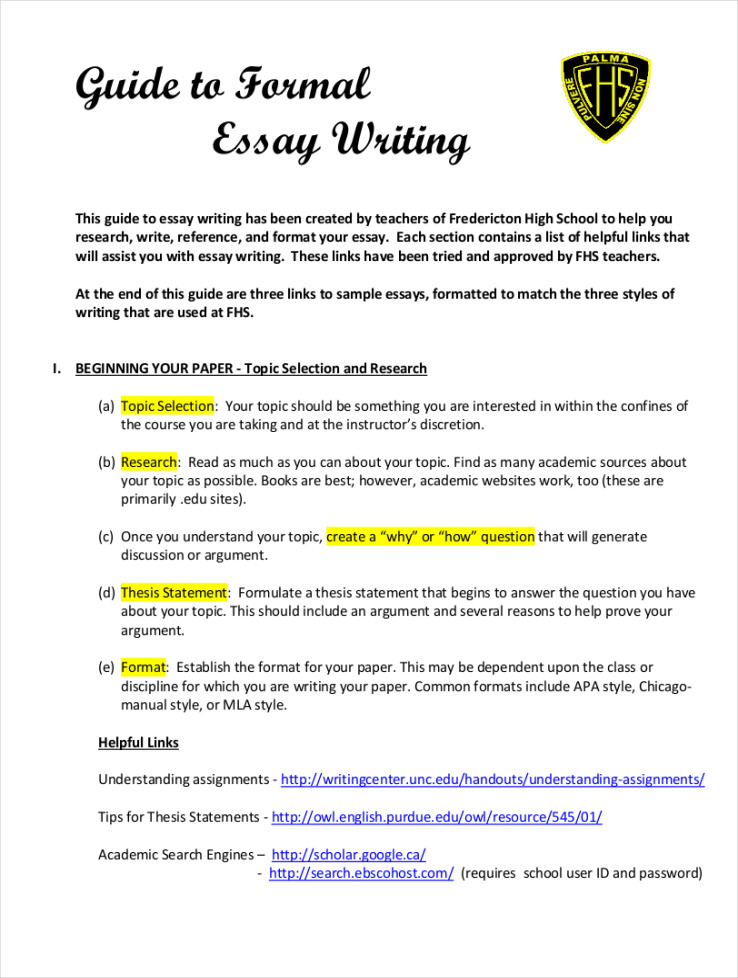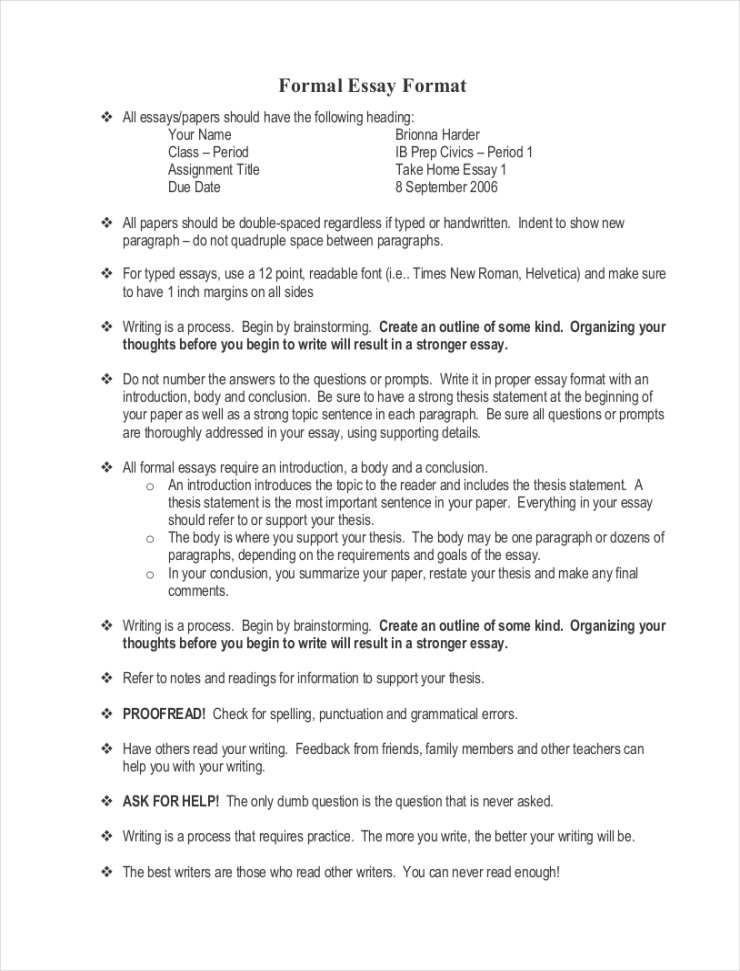Formal Essay Format Example
In academic writing, formal essays are an essential component that showcases a student’s ability to present logical arguments and critical thinking skills. These essays are commonly assigned by instructors to evaluate a student’s understanding of a particular topic or subject matter. In this article, we will explore the formal essay format and provide an example to help you gain a better understanding of how to structure and present your ideas effectively in a formal essay.
What do we mean by a formal essay format?
Formal essay format refers to the structure and organization of an essay that follows a specific set of guidelines. It is important to adhere to this format to ensure clarity, coherence, and a professional presentation of your ideas. By following a formal essay format, you can effectively communicate your thoughts and arguments to your readers.
How to structure a formal essay?

A formal essay typically consists of an introduction, body paragraphs, and a conclusion. Let’s break down the structure in detail:
Introduction:
The introduction serves as a roadmap for your essay and should grab the reader’s attention. Start with an engaging hook, provide relevant background information on the topic, and end with a strong thesis statement that presents the main argument of your essay.
Body paragraphs:

The body paragraphs of a formal essay develop and support the main argument presented in the thesis statement. Each paragraph should begin with a topic sentence that introduces the main point discussed in that particular paragraph. Follow the topic sentence with supporting evidence, examples, and analysis to strengthen your argument. Ensure that each paragraph transitions smoothly to the next, maintaining a logical flow of ideas.
It is crucial to present your evidence accurately and cite your sources properly. This not only strengthens your argument but also demonstrates your understanding of the topic and your ability to engage with scholarly sources.
Conclusion:

The conclusion summarizes your main points and reiterates your thesis statement. It should leave a lasting impression on the reader and provide a sense of closure. Avoid introducing new information or arguments in the conclusion and instead focus on reinforcing your main ideas.
Formal Essay Format Example:
Let’s consider an example to illustrate the formal essay format. Imagine you are writing an essay on the topic of climate change and its impact on the environment. Here’s how your essay could be structured:
Introduction:
Climate change is a pressing global issue that demands immediate attention. With rising temperatures, melting ice caps, and extreme weather events becoming increasingly common, it is crucial to understand the implications of climate change on our environment. This essay aims to examine the causes of climate change, its effects on ecosystems, and the possible solutions to mitigate its impact.
Body Paragraph 1:
One of the primary causes of climate change is the increased emission of greenhouse gases. The burning of fossil fuels such as coal and oil releases carbon dioxide into the atmosphere, trapping heat and leading to a rise in global temperatures. This phenomenon, often referred to as the greenhouse effect, has severe consequences for the environment.
According to scientific studies, the rise in temperatures has resulted in the melting of polar ice caps and glaciers, leading to rising sea levels. This poses a significant threat to coastal regions and low-lying areas, causing devastating floods and displacing millions of people.
Conclusion:
In conclusion, climate change is an urgent issue that requires immediate action. The causes of climate change, such as greenhouse gas emissions, have led to dire consequences for our environment and ecosystems. However, by implementing sustainable practices, investing in renewable energy, and raising awareness, we can work towards mitigating the impact of climate change and preserving the planet for future generations.
Frequently Asked Questions (FAQs):
1. Can I use personal pronouns in a formal essay?
Personal pronouns should generally be avoided in a formal essay. Instead, strive for an objective and academic tone by using third-person pronouns or referring to individuals or entities by their names or titles.
2. How long should a formal essay be?
It is important to check the specific guidelines provided by your instructor or institution. However, a formal essay typically ranges from 1,000 to 2,500 words, depending on the complexity of the topic and the level of study.
3. Can I include my personal opinions in a formal essay?
Formal essays should primarily rely on evidence, facts, and logical arguments rather than personal opinions. However, if your instructor allows for personal insights, ensure that they are supported by credible sources and presented in a balanced manner.
4. How should I format in-text citations in a formal essay?
In-text citations should follow a recognized citation style, such as APA, MLA, or Chicago. Consistency and accuracy are key when citing sources in your essay. Ensure that you provide sufficient information for readers to locate the source in your reference list or bibliography.
5. Is it important to proofread my formal essay?
Absolutely! Proofreading is essential to eliminate any grammatical and spelling errors, improve sentence structure, and enhance the overall clarity of your essay. Take the time to carefully review and revise your essay before submitting it to ensure its quality and professionalism.